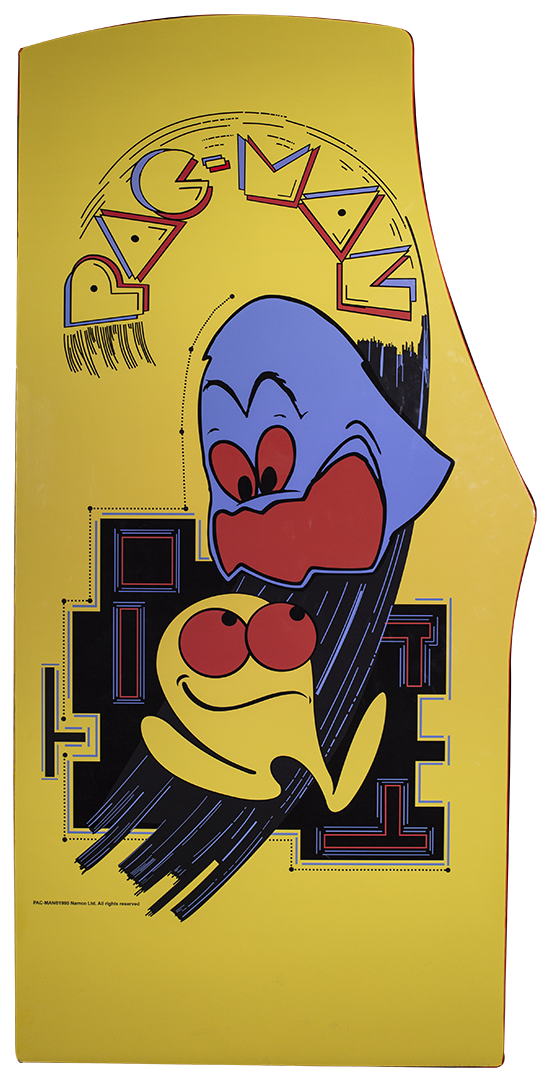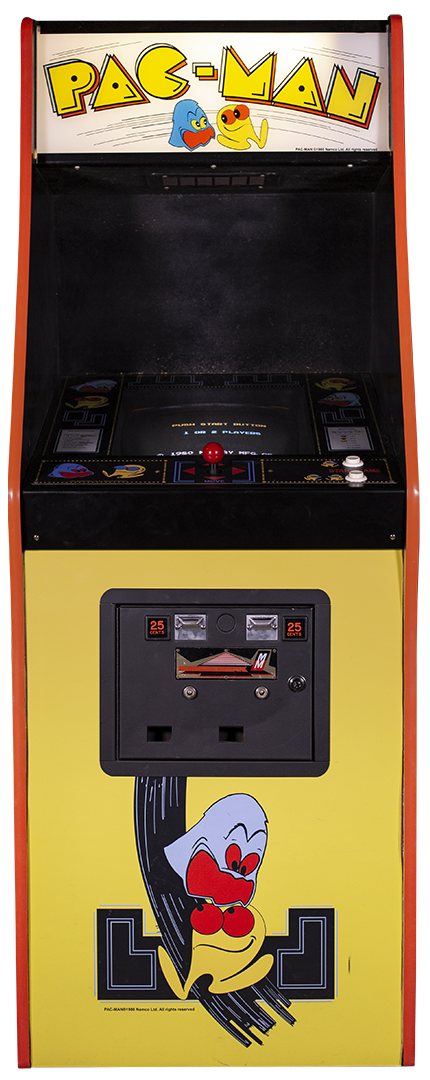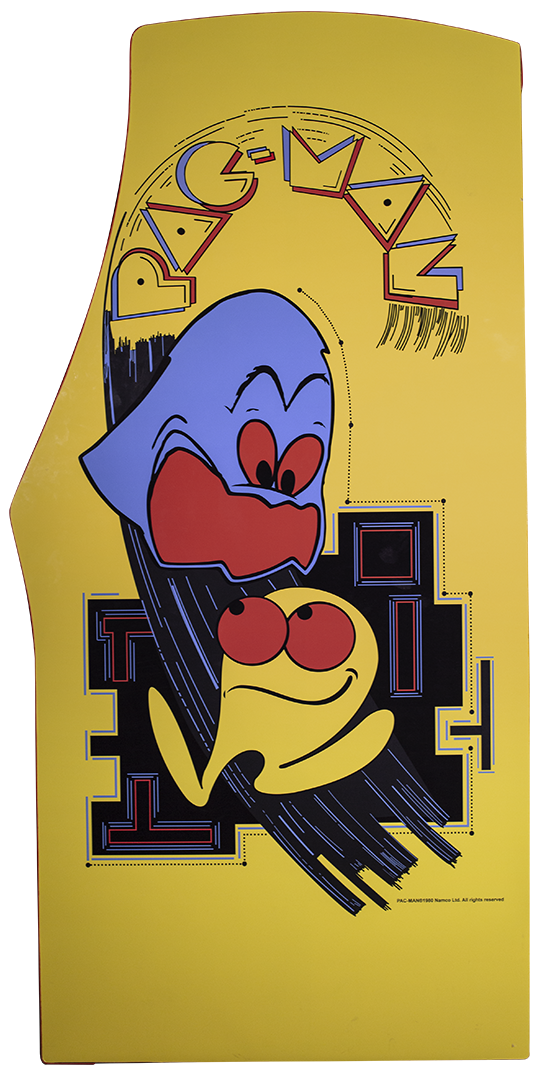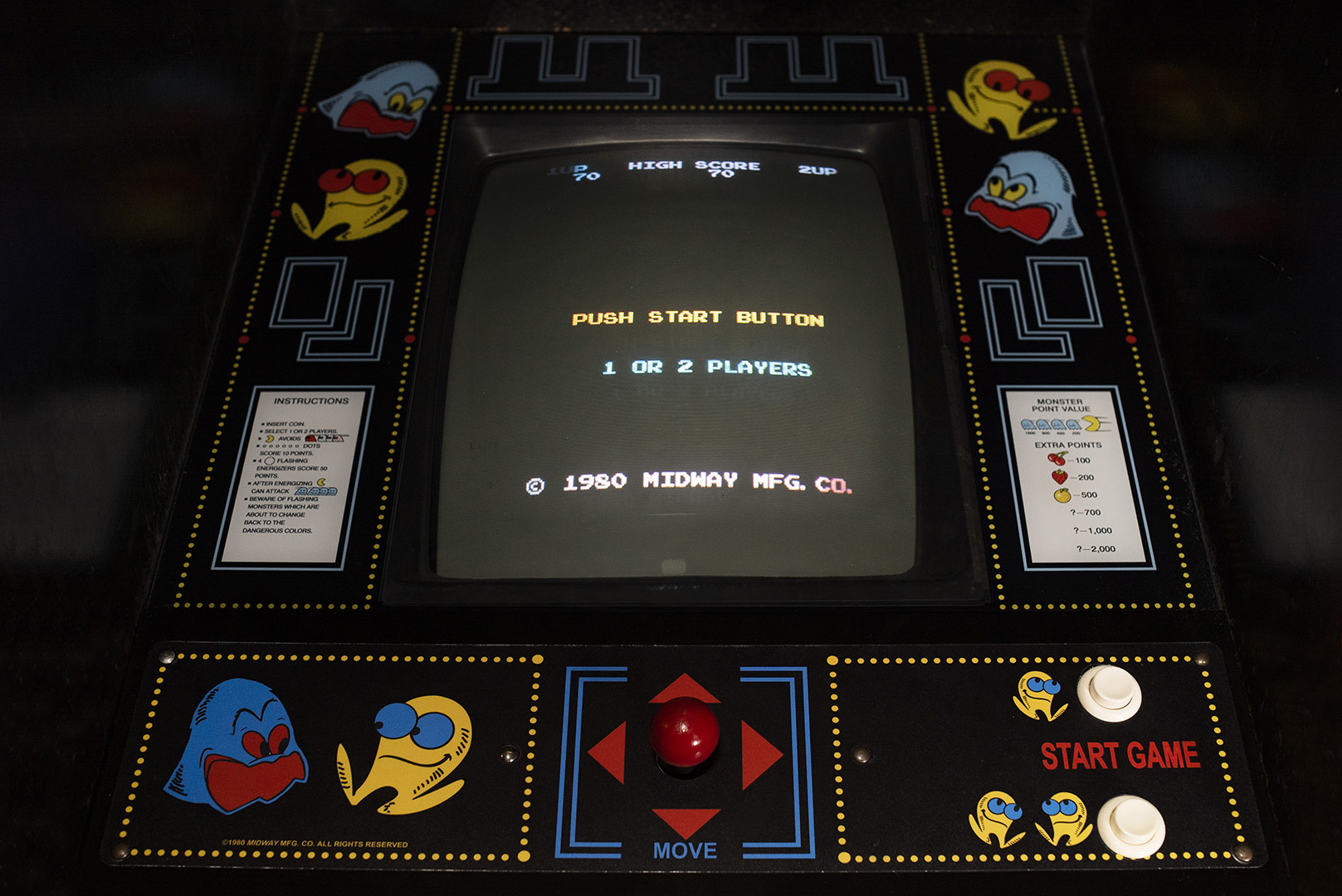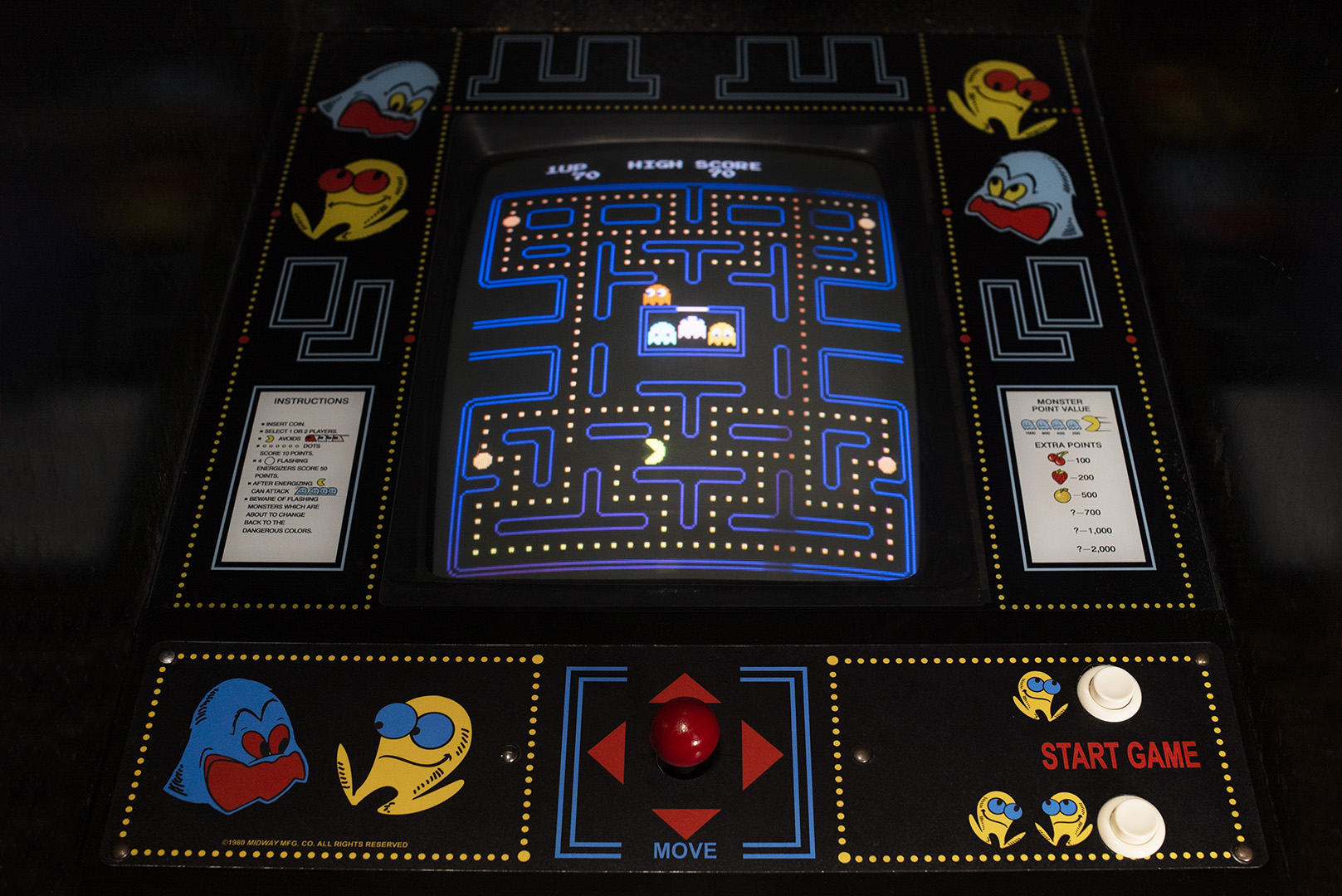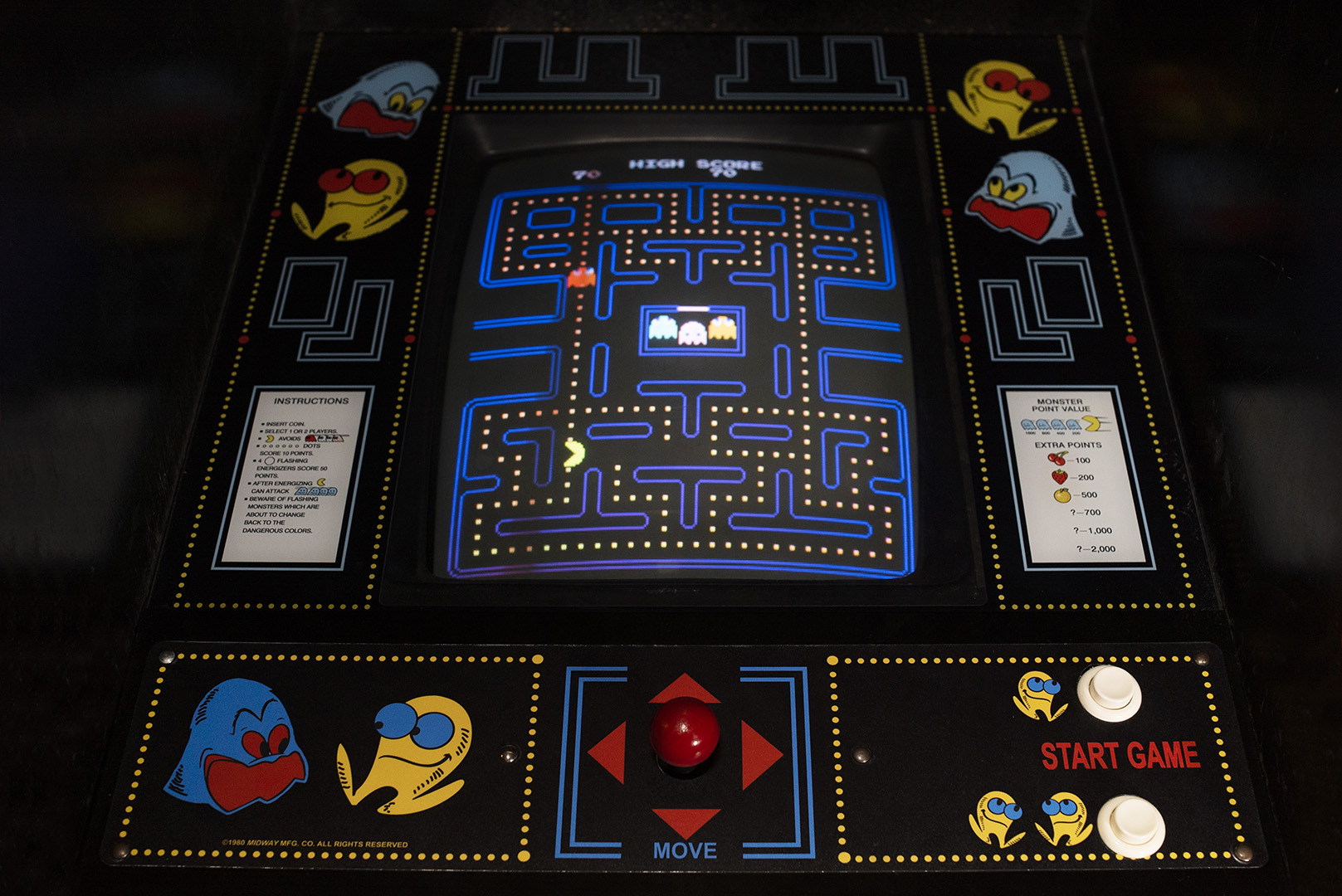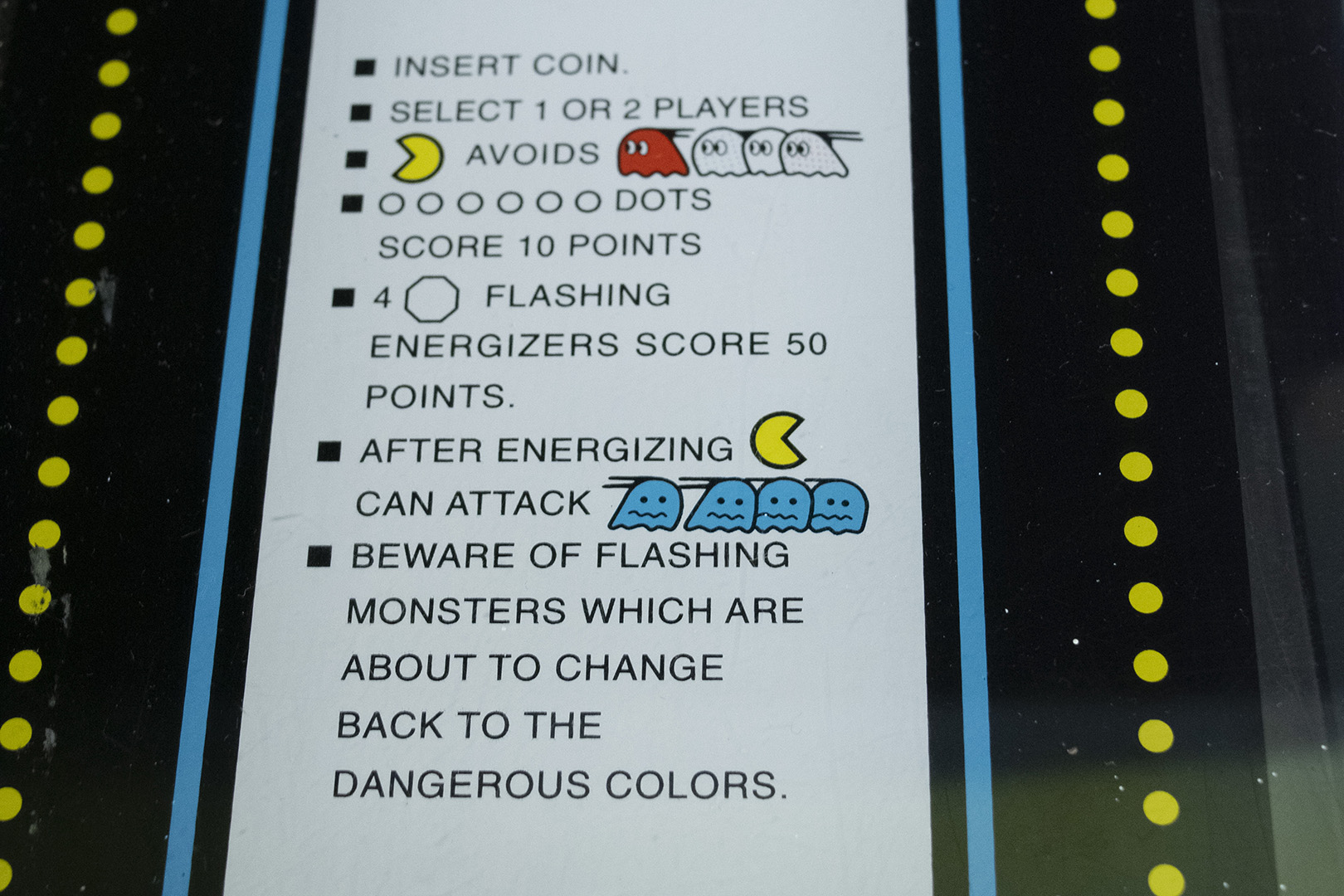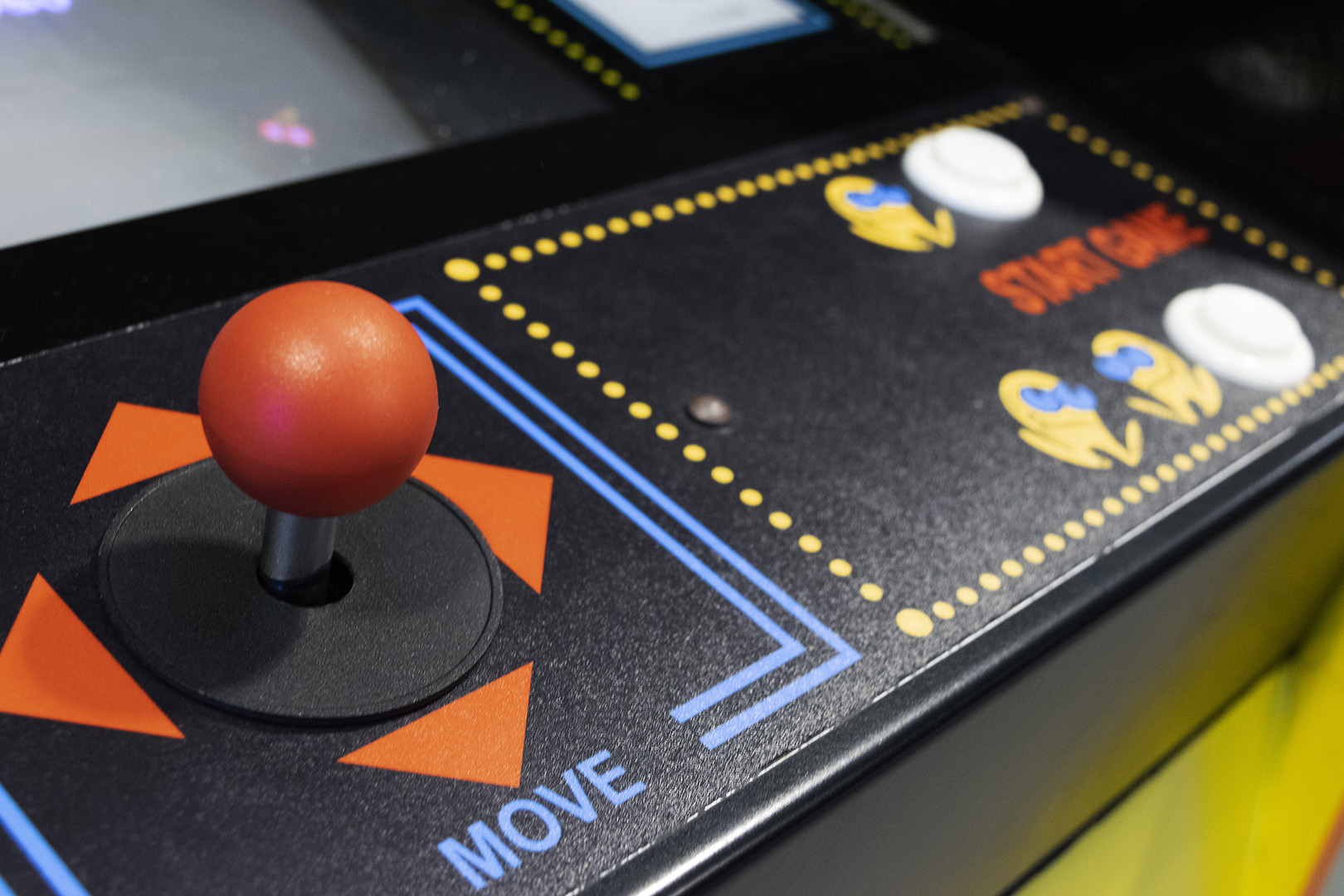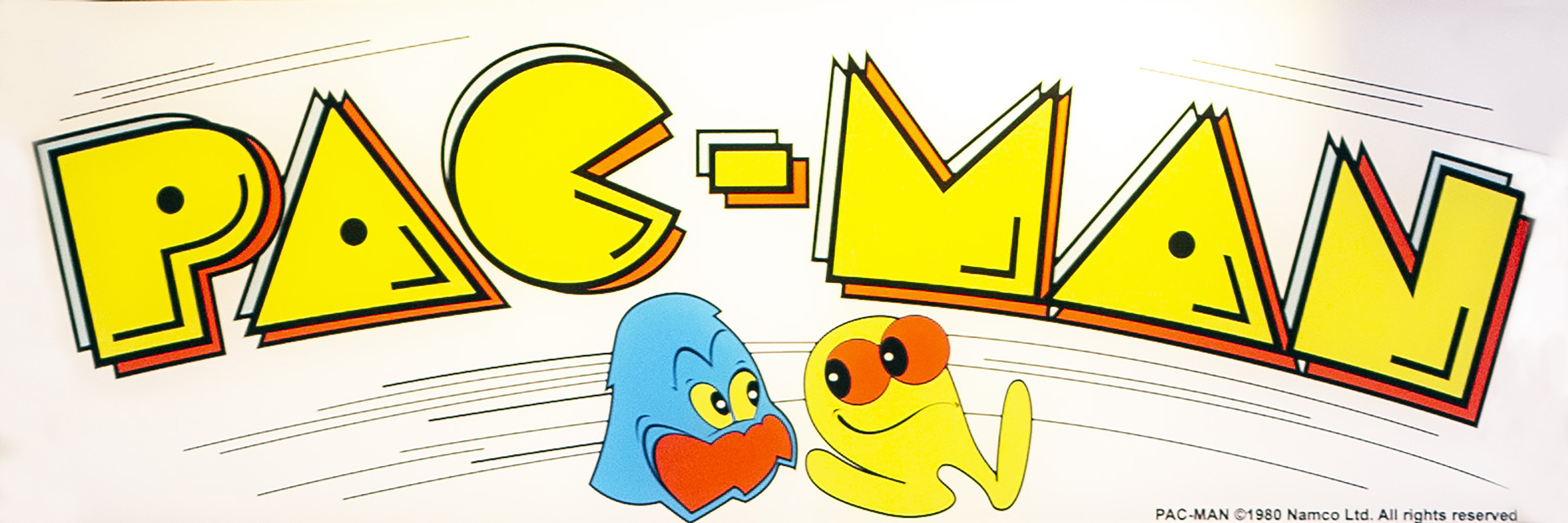
Pac-Man
TECHNICAL DATASHEET
Game name: Pac-Man
Manufacturer: Namco
Year of development: 1980
Category: Maze
Hardware Platform Info:
- Main CPU Z80 (3.072 Mhz)
- Z80 Sound CPU
- Sound chip: three-channel WSG (Waveform Sound Generator)
- Video Resolution 224 x 288
- 16Kb of ROM and 4Kb of RAM
Main developer: Toru Iwatani
Programming and development: Shigeo Funaki y Toshio Kai
Music Composer: Toshio Kai
GAME STORY
History of development:
Toru Iwatani, designer at Namco Japan at the end of 1979, looking for new ideas for the next video game, was inspired by looking at a pizza that was missing a few pieces and resembling the famous face of our protagonist. From here came the term Pakkuman (a name derived from the Japanese phrase” taberu Paku Paku”, which is used to describe the sound the mouth makes when it opens wide and then closes quickly over and over again - just like in the game!)
Becoming powerful by eating a super pill and then being able to face enemies was inspired by the character Popeye, who by swallowing his spinach multiplied his strength. One of the milestones achieved by this game was that Iwatani wanted to create a game that could appeal to women as well as men, as most video games at the time were war- or sports-themed. He changed the typical scenarios based on space wars for a maze, in which colorful characters wandered and with an action much less warlike than usual.
Each enemy (the well-known ghosts Blinky, Pinky, Inky and Clyde) moved with different premises (we can talk about a very basic form of artificial intelligence).
Before the release, the game was renamed Puck-Man, as a reference to the main character's hockey puck shape.
The game was released in Japanese arcades on May 22, 1980, and initially received a lukewarm response.
The company decided to launch its game in North America anyway. The name was changed back to the definitive Pac-Man, to avoid vulgar word games in English.
Pac-Man became a commercial success in North America since its arrival in October 1980. It became number one, ahead of the most popular games of the day, such as Asteroids or Space Invaders. By 1990 it had raised more than 2.5 billion (yes billions, with B) in quarter-dollar coins.
Game Overview:
The character's goal is to navigate the maze completely while eating all the points in it. From time to time elements such as fruits appear which will help us to increase our score. Meanwhile, 4 ghosts are dedicated to chasing our character with the intention of killing him, except after ingesting any of the power pills that will give him a few seconds of invulnerability, to be able to end the ghosts.
Curiosities:
In Arcade Vintage we were very lucky to coincide with Toru Iwatani in Barcelona during the celebration of RetroBarcelona in November 2017 and make him an honorary member of our association.
From level 18 onwards ghosts don't turn blue.
HISTORY OF MACHINE IN ARCADE VINTAGE
Status: OPERATIONAL
Information about the location and purchase by Arcade Vintage:
Acquired by José Mª Litarte. It was one of the first machines to arrive at the association in 2013. Originally in a Galaxian furniture with the game Galaga. Purchased from his friend Kevin Pitt in Brighton (England).
Dave "smuggler" took care of the transportation.
Information about the restoration process or repairs carried out:
Total restoration carried out by Ricardo Fernández-Vega and Javier Herrero from a Galaxian piece of furniture "the same as Pac-Man". It was a special order from José María to arrive on time at RetroBarcelona 2017 in less than 1 month, where our partner Kike, from Universo Arcade exhibited several machines at Namco's stand. The restoration was complete emptying, total cleaning, sanding, priming, new vinyl, panel, wiring, power supply and original Pac-Man plate.
As an anecdote, it was the machine played by Toru Iwatani, creator of the game, during his visit to the Barcelona Games World 2017.
Links to other related websites:
http://arcadevintageshop.blogspot.com.es/2013/10/las-mil-caras-del-comecocos.html
https://cincodays.com/2014/09/24/breve-historia-de-los-videojuegos-pacman/
